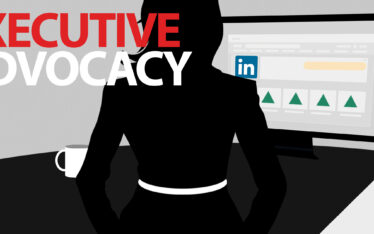
Organic Social Media Marketing: a 5-Step Strategic Framework
Most enterprise organizations have multiple marketing departments or functions: partner marketing, paid media, events, brand marketing.… and the social media team juggles content from all of them. Not to mention HR and corporate communications.
This was the case for a global B2B tech brand when I met with them last year. They struggled to align their departments and campaigns. Multiple editorial calendars in different formats and software programs led to confusion and missed opportunities. With so many social post requests they were chasing demands and unable to glean useful data from analytics reporting, much less stay in control of their posting schedule.
Most brands I work with have strong marketing strategies. Their campaigns are well thought out, and their paid media is planned well in advance. But when it comes to organic social media marketing, there’s no real framework or strategy.
Want to be more intentional with your organic social media marketing efforts? Follow this 5-step framework.
Step 1: Rethink the Funnel
Remember that just 5% of your LinkedIn audience is ready to purchase at any given time[1]. And during economic uncertainty? That drops to just 1%[2].
Why does this matter? Because…
Your primary goal with organic social media should be to
build credibility and trust with the 95%
so that when they are ready to purchase, they think of your brand first. That means you’ll need to continually nurture your LinkedIn audience with memorable, organic social content.
When it comes to your paid social media strategy, your funnel probably includes Top (Attract), Middle (engage), and Bottom (convert) funnel content. But there’s a disconnect with organic social media. Because organic social media is meant to engage your LinkedIn community – not sell to them – your funnel looks a bit different.
Instead of aware -> engage -> convert, it should look more like aware -> attract -> engage.
| Paid Social Strategy | Organic Social Strategy | |||||
| Funnel Position | Top: Aware | Middle: Engage | Bottom: Convert | Top: Aware | Middle: Attract | Bottom: Engage |
| Goals | Introduce brand, establish thought leadership | Retarget interested prospects, drive interest | Retarget engaged prospects, drive leads | Introduce brand, increase followers, begin to gauge interest | Improve brand recall, build credibility and trust, encourage consideration, continue to gauge interest | Nurture consideration, increase brand trust, build retargeting audience |
| Content | Ungated, TOF | Mostly ungated, top-to mid | Mostly gated mid-to-bottom | Ungated, TOF | Ungated top-to-mid funnel | Mostly ungated mid-funnel |
[Read: Social Media Marketing at the Intersection of SEO and Search Intent]
Step 2: Take (Back) Control
It’s likely that you receive dozens of requests from various marketing teams. And you probably receive them from various channels: email, Teams, project management dashboards, etc.. Nope. Not anymore! In this step, you take back control by providing a clear process and actionable instructions for submitting social media requests. Be sure to include the following:
Maximum number of social posts per week
The proper channel to submit requests
The approvals necessary
The content promotion kit elements
This helps marketing teams prioritize their content, allows you to plan and ensures you have what you need to successfully launch and promote each asset.
Step 3: Standardize Your Content Promotion Kit
Every content asset your team creates should come with launch bundle or promo kit elements. Your master spreadsheet of content assets should include the following information for organic social media:
- Stage of funnel
- Social-sized creative images
- Campaign association
- Objective of each asset and how it contributes to campaign goals
- Paid campaign timeframe
- Paid social results
Step 4: Put the Plan in Motion
4-week cycle: Aware (1 week) -> Attract (1 week) -> Engage (1 week) -> Analysis
Each month, you’ll spend a week at each stage of the funnel. You might need to front load the awareness stage with 2-3 weeks at first. Then move to attract and not add engage until month two or three depending on your results.
Here’s an example of how this works: If you know that you’ll be running ads in Q2 to capture leads for an upcoming webinar, you can plan organic posts leading into Q2 that build brand awareness around the topic of the webinar. This will help position your brand as a thought leader so that when those webinar ads roll out, your audience will be more likely to register.
Step 5: Run a/b-like tests
a/b tests are typically reserved for paid social media ads, but, albeit not as precise, there are ways to test organic social posts to learn what your audience most responds to. A few ideas for organic post tests include:
- Auto-populated vs. created images
- Different visuals
- CTA vs. no CTA
- Gated vs non-gated
Organic tests should be done at least two weeks apart. Which asset performs best at each stage?
Step 6: Dive Into the Data
Establish your KPIs and industry benchmarks and share them with team members and stakeholders so that everyone is on the same page. Include both of these in your monthly reporting template so that it’s easy to compare results and see your progress. Include Share of Voice (SOV), Engagement, Engagement Rate, and Engagement Type:
- Follows
- Reactions
- Comments
- Shares
- Saves
Meet monthly with your stakeholders to review the data, talk through findings, and plan for the month ahead.Y
Could your team use a hand building a social media playbook for your brand? Schedule time to chat here.
[1] https://business.linkedin.com/marketing-solutions/b2b-institute/b2b-research/trends/95-5-rule
[2] https://www.marketingweek.com/99-1-rule-invest-recession/


